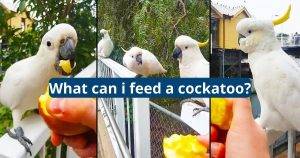How Long Does Canary Molt Last?

One of the most frustrating events a canary owner will experience is when their pet begins to molt and won’t sing. It is important to note that if the moulting process is lasting longer than expected your pet should be taken to a veterinarian as this may indicate a ‘soft’ molt.
The length of a canary’s molt depends on a number of factors.
Canaries require a proper diet during the molting process. During this time, their feathers may look loose and disheveled, and males often stop singing. This is a natural response to the energy drain that comes with growing new feathers. Adding high-protein foods to the diet, such as egg food and oily seeds like niger, flax and rape, will help make the molting process go more smoothly for the bird. Additionally, daily baths stimulate the preening process and can aid in a faster replacement of feathers.
The molting process seems to be partially controlled by the birds’ internal clock, and will normally begin with the decline of daylight hours after summer solstice. However, external factors can cause a canary to molt out of season. Fear (noises, other pets, etc), overly warm temperatures, and artificial lighting are all common causes of out-of-season molting.

Temperature
A canary’s molt is triggered by daylight, so it’s important to make sure the bird’s cage has enough light. During this time, the feathers will appear loose and unkempt. They may also be gathered together at the bottom of the cage, which is normal. You can help your canary during this time by covering their cage at sundown and uncovering it in the morning to mimic natural sunlight.
Once the old feathers fall off, new ones will begin to grow. These new feathers will look a bit like pins from the canary’s skin. They will be gray, brown or whatever the canary’s natural color is.
As a result, the canary will be very listless and passive during this time. It will not sing because it is too focused on the molting process. This can be a stressful process for the canary and if it’s repeated too often, it could cause health problems. It’s important to provide your canary with a healthy diet, adequate room temperature and adequate rest for this process.

Diet
During the summer, when canaries have the longest number of daylight hours, a natural annual molt will begin. This molt is what causes the feathers on your canary’s body to grow new ones. It will take 6 to 12 weeks and the feathers will look loose and disheveled. During this time, your canary’s energy will be low and he may lose appetite.
The onset of the molt is due to an increase in thyroid hormones caused by the long days and the heat. However, the shedding of these hormones will not affect the wings and tail feathers, which are required for flight.
During this period, your canary’s diet will need to include protein, fat and vitamins to support the growth of the new feathers. Try feeding him more eggs, oil-rich seeds, niger seed, flax seed and small live or canned crickets and mealworms to supply his nutrients. Also, make sure he is getting enough water.

Environment
Canaries are cold-blooded birds, meaning their internal body temperature is dependent on their environment. Therefore, they need a warm and comfortable atmosphere to avoid the stress of molting. A canary’s environment should also be stocked with the right nutrients to help them go through a successful molt.
Canary owners should keep their pet’s cage at a steady temperature of about 65 to 75 degrees Fahrenheit. They should also make sure their bird’s food contains enough calcium, phosphorus, and vitamin D. This will promote a healthy and speedy molt.
During the molting process, a canary may become less active and appear sluggish. They might also stop singing during this time because it takes up too much energy. Once the molt process is over, the bird should resume singing normally.





